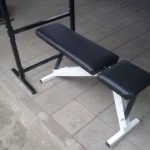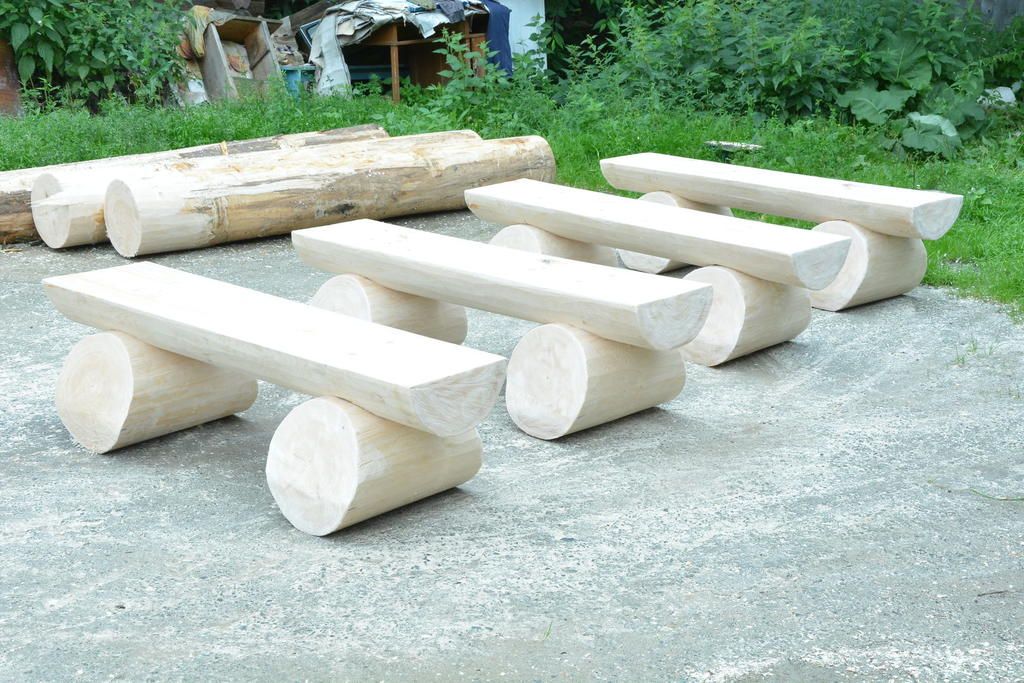Do-it-yourself abdominal bench
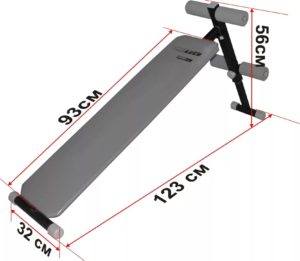 At all times, a slender, fit figure attracted attention. Nowadays, there are many fitness clubs for training the body, but going to the gym is not always possible due to lack of time. Everything can be solved by creating an abdominal exercise machine with your own hands.
At all times, a slender, fit figure attracted attention. Nowadays, there are many fitness clubs for training the body, but going to the gym is not always possible due to lack of time. Everything can be solved by creating an abdominal exercise machine with your own hands.
The content of the article
Pros of using an ab bench
 An abdominal bench will help you make your body strong and attractive, and its compactness is a big plus for using at home. It does not take up much space and will easily fit in the closet. With a bench at home, you can save not only time for going to the gym, but also money for attending classes. Exercises that can be performed on the simulator develop the muscles not only of the abdomen and back, but also of the legs, arms, and chest. To properly train the body, you need to create a program, a training plan for different muscle groups. It is also necessary not to forget about proper nutrition, this also helps to improve the body.
An abdominal bench will help you make your body strong and attractive, and its compactness is a big plus for using at home. It does not take up much space and will easily fit in the closet. With a bench at home, you can save not only time for going to the gym, but also money for attending classes. Exercises that can be performed on the simulator develop the muscles not only of the abdomen and back, but also of the legs, arms, and chest. To properly train the body, you need to create a program, a training plan for different muscle groups. It is also necessary not to forget about proper nutrition, this also helps to improve the body.
Types of simulators:
- bench for the press with a movable back (for selecting an exercise mode);
- Roman chair;
- inclined (some have a curved back).
REFERENCE! Most of the exercises can be performed on a regular abdominal bench and wall bars, using the wall as a body trainer.
Making a do-it-yourself abdominal bench
The first thing you need to do before starting to create a simulator is to decide what material it will be made of, iron or wood. You also need to acquire the necessary tools and materials.
Required tools:
- Welding machine (with everything necessary).
- Electrodes.
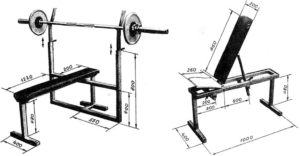
- Welding mask.
- Angle grinder (grinder).
- Pliers.
- Drill.
- Hand saw (hacksaw).
- Pencil (for marking).
IMPORTANT! Work should only be carried out in a specially prepared place to avoid fire and injury. When using an angle grinder, wear safety glasses; iron filings can damage your eyes. Welding work must be carried out in special protective clothing.
The frame of the simulator is made of metal pipes with a diameter of 50 mm and a wall thickness of at least 2 mm. It is advisable to take square pipes, but triangular and round pipes are also suitable.
ATTENTION! To make the frame, you can use a metal corner with a width of at least 30 mm and a thickness of 2 mm. And also a wooden beam measuring 50*70 mm. The dimensions of the structure depend on the compactness of the simulator and the structure of the body.
Regular ab bench
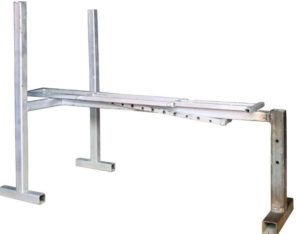 To create, we will use square pipes, 70*30 mm in size and 2 mm in wall thickness, as well as round pipes with a diameter of 20 mm, a wall thickness of at least 1 mm. It is better to use thick-walled pipes.
To create, we will use square pipes, 70*30 mm in size and 2 mm in wall thickness, as well as round pipes with a diameter of 20 mm, a wall thickness of at least 1 mm. It is better to use thick-walled pipes.
We cut the pipes into their component elements:
- 1 square pipe 120 cm;
- 1 round pipe 40 cm.
These elements make the frame stable. We connect them by welding with a T-shaped connection. This will be the foundation.
Next, create a second stop and connect them:
- 1 piece of square pipe 70 cm;
- 1 piece of round pipe 40 cm.
We connect these sections with a T-shaped connection using welding. This component is called the leg of the simulator. We got two letters T. Now we connect these stops by welding the legs of the letter T at an angle of 90 degrees.
Next, we make a mount for the seat of the exercise machine - 4 square pipes of 10 cm each.
We weld the sections on the sides of the base, at a distance of 30 and 70 cm from the junction with the leg. We make holes in the mount with a diameter of 8–10 mm for fastening the seat, at a distance of 5 cm from the base.
We create a footrest - 4 round pipes 20 cm.
We weld the parts to the frame leg on the sides, 2 pieces at the junction of the leg and base, for bending the knees, the rest from the bottom of the leg at a distance of 10–30 cm from the T-shaped joint. The entire structure is painted in the required color.
Next we do the sitting. We will need a board with a thickness of at least 12 mm, a width of at least 30 cm and a length of 70 - 90 cm. We also need foam rubber and leatherette for comfort. We screw the seat to the mount, preferably with bolts, after making holes in the board or using a self-tapping screw. We cover the seat with foam rubber and secure it with leather using a furniture stapler.
ATTENTION! These design dimensions are not required to be observed; make the exercise machine based on the parameters of your body. It is also advisable to cover the places where the knees bend and where the legs rest, with foam rubber for more comfortable and proper muscle training.
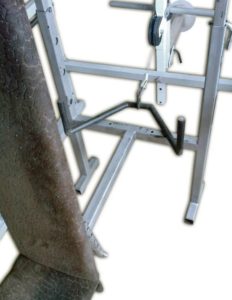
This type of simulator differs from the usual one in that it is possible to adjust the level of seat inclination. To do this, you will need to make a drawing, as well as prepare the necessary material and tools.
There are several types of bench upgrades, but we will look at two of them. Changing the angle of inclination by raising the height of the seat and changing the angle by adjusting the legs of the exercise machine.
In both cases, we will need the same set of materials and tools as when creating a regular bench. Only in addition you will need a pipe of a smaller diameter to create an adjustment.
ATTENTION! If you make a simulator from wood or a metal corner, you need to calculate a drawing for a specific material. It will differ from the described method.
Changing the angle by adjusting the legs of the exercise machine
We make the frame as for a regular bench, but reduce the size of the leg to 40 cm and do not make a T-shaped connection for the support. Next, we take a prepared pipe of smaller diameter, approximately 25*65 mm. We make a part 50 cm long.
We weld two parts of a 20 cm round pipe with a T-shaped connection to this part, this will be the height adjuster of the leg. We make holes in the leg with a diameter of 10 mm in the center at a distance of 2–3 cm from the end of the leg and in the regulator as well, but in increments of 5 cm, you get 9 holes. Now you need a pin that will serve as a fixator for the height of the leg. Thus, we received a simulator with a minimum height of 45 cm and a maximum of 85 cm, for different loads.
Changing the angle by raising the back of the machine
We will need to change the frame, as in the first case, only now we need to upgrade the back instead of the leg. To do this, instead of the T-shaped connection of the base, we need to weld a piece of pipe measuring 30*70 and 10 cm long. Construct the regulator in the same way as in the first case, drill a hole in the welded section and secure the structure with a clamp.
Wall bars as an abdominal exercise machine
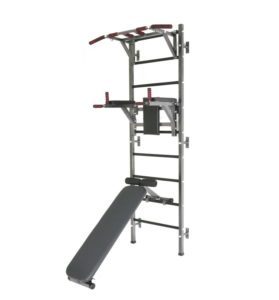 In the case where there is already a wall bars at home, there is no need to construct complex simulators. Because the wall can replace the frame for the bench.It will be necessary to design a backrest for classes and a mount for the wall. To do this, you will need a wooden block 120 cm long, a board 30 cm wide and 70–90 cm long, and 2 small bars 40 cm long.
In the case where there is already a wall bars at home, there is no need to construct complex simulators. Because the wall can replace the frame for the bench.It will be necessary to design a backrest for classes and a mount for the wall. To do this, you will need a wooden block 120 cm long, a board 30 cm wide and 70–90 cm long, and 2 small bars 40 cm long.
IMPORTANT! The dimensions of the bar and the thickness of the board must be selected in accordance with the weight of the person in order to avoid injury.
Make two T-shaped connections from the bars, with the long bar on top of the small ones. One side of the beam will act as a stop, and the second will be a fastening for the wall. Secure the beam in the center of the board so that it does not move away when body weight is applied to the board. Soften the board with foam rubber and leatherette.

